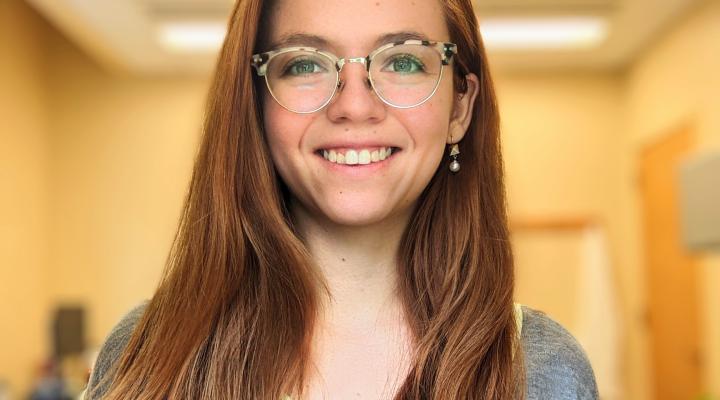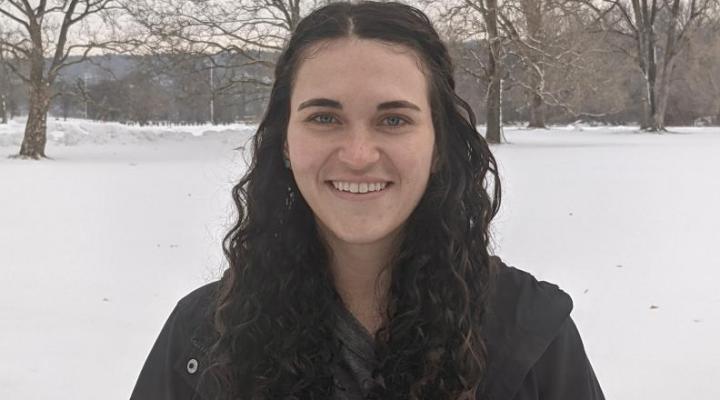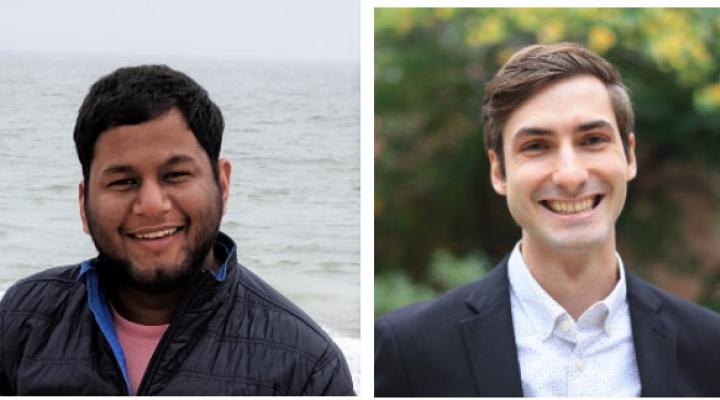The Fleming Scholar award in the Robert Frederick Smith School of Chemical and Biomolecular Engineering was established in 2015 by a generous gift from alumnus Samuel C. Fleming '62 and his wife Nancy Fleming to recognize the very best graduate students working on biomolecular engineering research themes. The long-term goal of the Fleming Scholars program is to attract, educate and graduate Cornell Ph.D.s capable of leading their fields and of pioneering new areas of study that advance biomolecular engineering science.
Nominations for the award are solicited annually and come from a student's thesis advisor or from someone knowledgeable about the nominee's scholarship and potential. Although the Fleming Scholar recognition is bestowed annually, students receiving the award in any given year will hold the distinguished title for the duration of their Ph.D.
The 2018 awardees are Jay Gandhi and Yehou Michel Davy Gnopo:
Jay Gandhi (Paszek Group)
Cancer aggression is typically accompanied by the presence of abundant polymers of sugars and proteins on the cell surface. These polymers form a coat called the glycocalyx. Gandhi uses computational and theoretical means to study the cancer glycocalyx and understand how cancer cells may be using this coat for their own good.
Particularly, Gandhi studies how cancer cells can use their dense glycocalyx to change their shape. He draws upon theoretical analyses of polymers attached to a surface to predict how cancer cells generate long tubes that they may use for communicating with other cells. He also uses computational approaches based on chemical transport and mechanics to understand the changes occurring in the glycocalyx when cancer cells reside in tightly packed tumors and when they metastasize through confined tissue spaces.
The changes Gandhi’s simulations predict suggest cancer cells could use their confined environments to their advantage, due to indirect effects of the glycocalyx on chemical reaction pathways necessary for cell survival and growth. Gandhi hopes in the future this work can contribute to the development of cancer therapies targeting the abundant polymers in the glycocalyx, and particularly the physical functions of these molecules.

Yehou Gnopo (Putnam Group)
Having grown up in Ivory Coast, an-ex French colony in Western Africa, I understand very well the importance of meeting the eight Millennium Development Goals defined by the United Nations. A lacking educational system, a failing healthcare and a stagnant economic landscape strongly reliant on foreign aid are issues I studied and lived daily. However, while I was unable to do much about these issues, except pursuing a more complete education beyond the Atlantic, I have been able to accumulate experience and tools to play a more crucial role in the efforts to implement the goals.
As a matter of fact, my training at Cornell has exposed me to the inner workings of the vaccine and drug development and approval process. This knowledge and the work I have been conducting are quintessential for successful vaccination programs against infectious diseases. Effective vaccination programs are vital to economic development in developing countries who rely heavily on a healthy labor force.
Pathogen-like-particles (PLPs) are a promising vaccine delivery platform that can mimic pathogens and induce protective immune responses. Outer membrane vesicles, or OMVs, spherical lipid bilayers about 30-300 nm that naturally bud from the outer membrane of bacteria, are one example of PLPs. They display many pathogen-associated molecular patterns that mimic the composition and architecture of pathogens, making OMVs an excellent PLP vaccine adjuvant.
In addition to their adjuvant properties, OMVs can be engineered to display exogenous pathogenic proteins, making them a versatile vaccine delivery vehicle for a wide range of potential pathogens. For example, we previously engineered OMVs that effectively protected mice and ferrets from pandemic influenza infection. The focus of my research is to investigate the colloidal stability of OMVs and expand the repertoire of pathogenic antigens that can be carried by OMVs to increase their utility to prevent infectious disease. Specifically, my research aims to recapitulate pathogen antigen composition through studying how to trigger fusion of OMVs to create hybrids that contain multiple antigens on a single vesicle.









